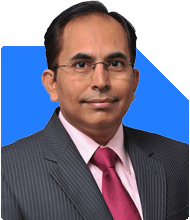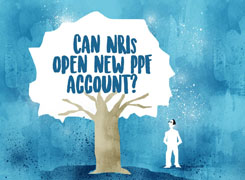51-Year-Old Govt. Employee with ₹70k Pension: Safe Retirement?
Ramalingam Kalirajan |7787 Answers |Ask -Follow
Mutual Funds, Financial Planning Expert - Answered on Feb 04, 2025
He has an MBA in finance from the University of Madras and is a certified financial planner.
He is the director and chief financial planner at Holistic Investment, a Chennai-based firm that offers financial planning and wealth management advice.... more

I am 51, in central government service, having old pension scheme. I want to take retirement. I shall get a gross pension of 70 thousand rupees. I shall get around 70 lakhs from GPF, leave salary and gratuity which I shall invest in long term govt securities. In addition, I have equity shares having CMP 60 lakhs. Am I taking a safe decision?
Strength of Your Retirement Plan
You have a secured pension of Rs 70,000 per month.
This provides a stable and guaranteed income for life.
Your one-time corpus is Rs 70 lakhs.
You also hold equity investments worth Rs 60 lakhs.
Your approach shows good financial discipline.
Analysing Your Monthly Income and Expenses
Your gross pension is Rs 70,000 per month.
After tax deductions, your net pension will be lower.
Inflation reduces purchasing power over time.
Healthcare costs increase after retirement.
You need a detailed expense plan for the next 30+ years.
Strength of Your Investment Plan
You plan to invest Rs 70 lakhs in long-term government securities.
Government securities are safe but offer moderate returns.
A portion should go into mutual funds for better growth.
Your Rs 60 lakh equity portfolio adds growth potential.
You need a balanced approach between safety and returns.
Risk Factors in Your Plan
Pension covers basic needs, but future inflation is uncertain.
Government securities give low returns, which may not match inflation.
Equity investments are subject to market fluctuations.
Medical emergencies can impact finances unexpectedly.
You need a contingency fund for unpredictable expenses.
Recommendations for a Safer Retirement
Keep at least 2 years’ expenses in a liquid fund.
Diversify Rs 70 lakhs across FDs, debt funds, and balanced funds.
Maintain 30-40% of your portfolio in equity for future growth.
Consider mutual funds with a Certified Financial Planner for professional management.
Track your pension expenses annually to adjust investments.
Final Insights
Your pension gives you financial security.
Your corpus of Rs 70 lakhs should be wisely allocated.
Equity exposure is good but needs risk management.
A diversified portfolio ensures consistent income and future growth.
Plan for medical emergencies and inflation protection.
Best Regards,
K. Ramalingam, MBA, CFP,
Chief Financial Planner,
www.holisticinvestment.in
https://www.youtube.com/@HolisticInvestment
You may like to see similar questions and answers below
Ramalingam Kalirajan |7787 Answers |Ask -Follow
Mutual Funds, Financial Planning Expert - Answered on May 07, 2024
Ramalingam Kalirajan |7787 Answers |Ask -Follow
Mutual Funds, Financial Planning Expert - Answered on May 20, 2024
Ramalingam Kalirajan |7787 Answers |Ask -Follow
Mutual Funds, Financial Planning Expert - Answered on Sep 28, 2024
Janak Patel |14 Answers |Ask -Follow
MF, PF Expert - Answered on Jan 29, 2025
Ramalingam Kalirajan |7787 Answers |Ask -Follow
Mutual Funds, Financial Planning Expert - Answered on Feb 04, 2025
Ramalingam Kalirajan |7787 Answers |Ask -Follow
Mutual Funds, Financial Planning Expert - Answered on Feb 04, 2025
Ramalingam Kalirajan |7787 Answers |Ask -Follow
Mutual Funds, Financial Planning Expert - Answered on Feb 04, 2025
Radheshyam Zanwar |1174 Answers |Ask -Follow
MHT-CET, IIT-JEE, NEET-UG Expert - Answered on Feb 04, 2025
Janak Patel |14 Answers |Ask -Follow
MF, PF Expert - Answered on Feb 04, 2025
Ramalingam Kalirajan |7787 Answers |Ask -Follow
Mutual Funds, Financial Planning Expert - Answered on Feb 04, 2025
Ramalingam Kalirajan |7787 Answers |Ask -Follow
Mutual Funds, Financial Planning Expert - Answered on Feb 04, 2025
Ramalingam Kalirajan |7787 Answers |Ask -Follow
Mutual Funds, Financial Planning Expert - Answered on Feb 04, 2025
Ramalingam Kalirajan |7787 Answers |Ask -Follow
Mutual Funds, Financial Planning Expert - Answered on Feb 04, 2025














.jpg)





